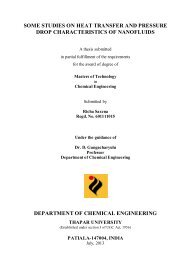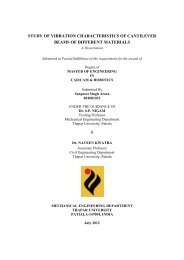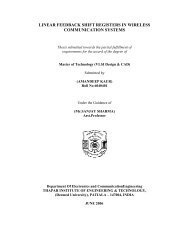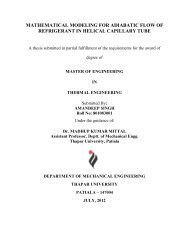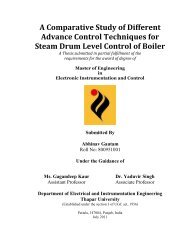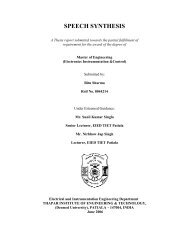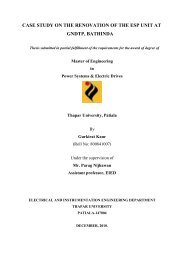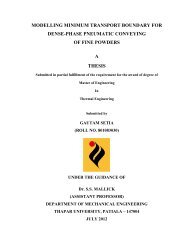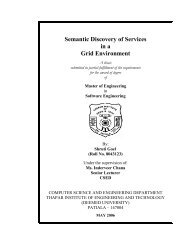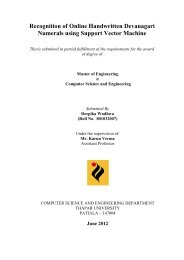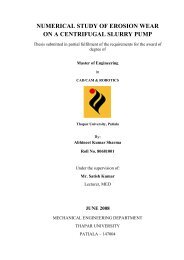from indigenous fermented foods and human gut ... - Thapar University
from indigenous fermented foods and human gut ... - Thapar University
from indigenous fermented foods and human gut ... - Thapar University
Create successful ePaper yourself
Turn your PDF publications into a flip-book with our unique Google optimized e-Paper software.
2.4.2 Application of bacteriocins in food<br />
Chapter II Review of Literature<br />
Most bacteriocin-producing LAB are <strong>indigenous</strong> food isolates <strong>and</strong> due to their great potential<br />
in food preservation, bacteriocins has been subjected to extensive research during the last few<br />
years. The studies show their great potential in biopreservation, for example in dairy<br />
products, canned food <strong>and</strong> alcoholic beverages. Although numerous methods other than<br />
bacteriocins are available for the preservation of food <strong>and</strong> beverages, an increasingly health<br />
conscious public are looking for <strong>foods</strong> that have not undergone extensive processing <strong>and</strong><br />
contain no chemical preservatives. Bacteriocins are often promoted as potential<br />
biopreservatives, but it is generally suggested that these antimicrobial peptides should not<br />
primarily be used to prevent the growth of spoilage microorganisms. They rather should be<br />
used in addition, to decrease the possibility of spoilage (Deegan et al., 2006). Bacteriocins<br />
can be introduced into food to improve its safety in the following ways: i) in <strong>fermented</strong> food<br />
where bacteriocins can be produced in situ by bacterial cultures which can replace either all<br />
or part of a starter culture; (ii) purified or semi-purified bacteriocins can alternatively be<br />
added directly as an additive; or (iii) an additive based on a fermentate of a bacteriocin-<br />
producing strain (Cotter et al., 2005). Incorporating purified bacteriocins might not always be<br />
attractive to the food <strong>and</strong> beverage industry, since in this form bacteriocins may have to be<br />
labelled as an additive like other preservatives <strong>and</strong> regulatory approval might be necessary<br />
(Deegan et al., 2006). Several important factors must be considered when screening for a<br />
bacteriocin producing strain with potential in food application: the bacteriocin should have a<br />
broad spectrum of inhibition <strong>and</strong> be highly active; it should also be heat-stable, have no<br />
associated health risks <strong>and</strong> it should bring beneficial effects such as improved safety, quality<br />
<strong>and</strong> flavour (Cotter et al., 2005). The physical <strong>and</strong> chemical properties of the food or<br />
beverage can also influence the efficiency <strong>and</strong> stability of a certain bacteriocin <strong>and</strong> have to be<br />
44



